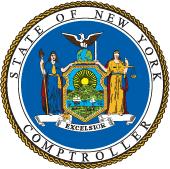Obstacles to Independence: Financial Challenges Facing Young Millennials and Gen Z
New York’s young adults — some members of Generation Z (born 1997-2012) and Millennials (born 1981-1996) — are facing a complex economic landscape, including higher unemployment rates, increasing costs, and larger debt burdens, that threatens their financial well-being. Rising household expenses, particularly for food, housing, and transportation, have outpaced growth in income. These conditions raise concerns about the State’s ability to retain its young workforce, critical for sustaining long-term growth.
